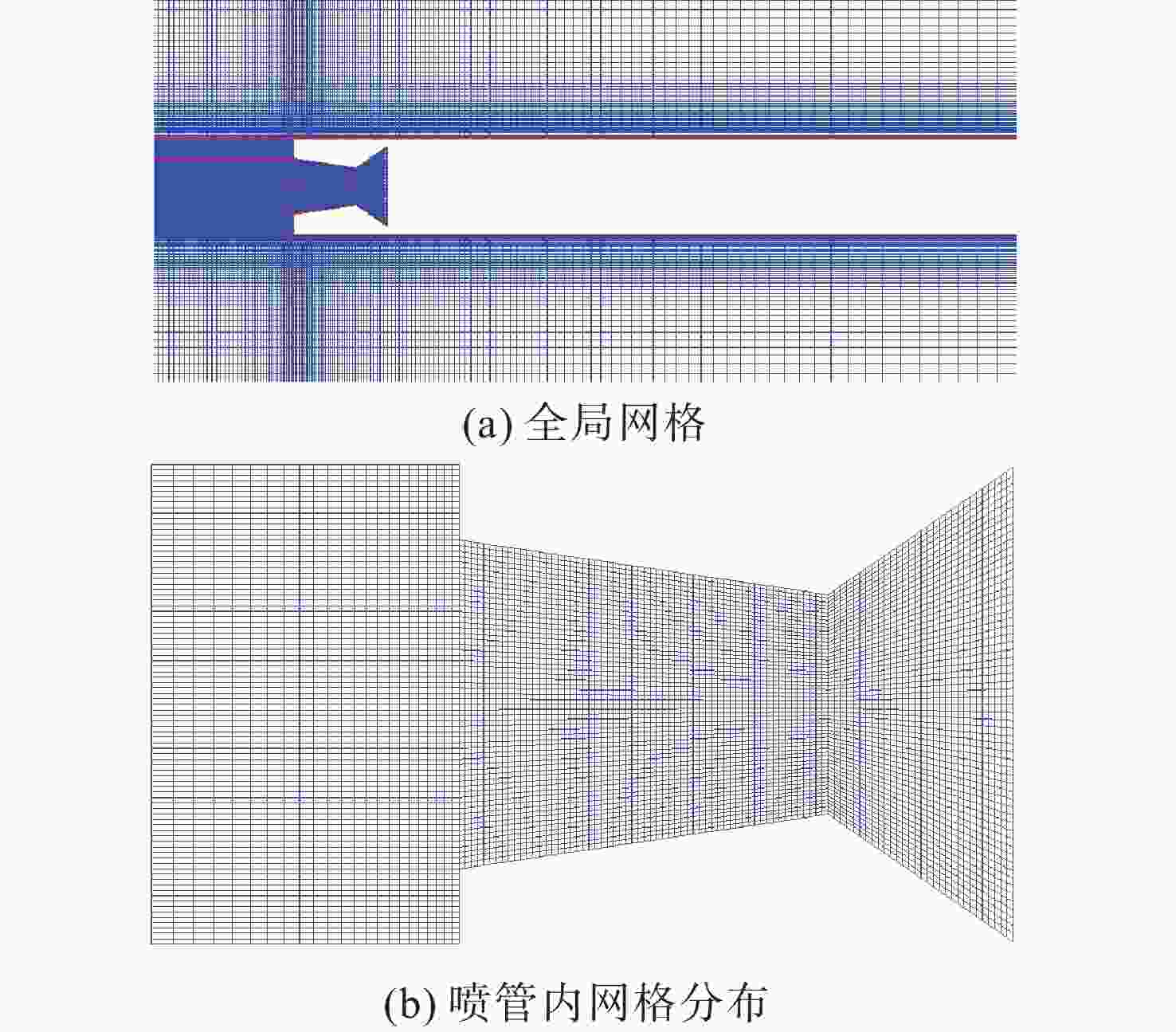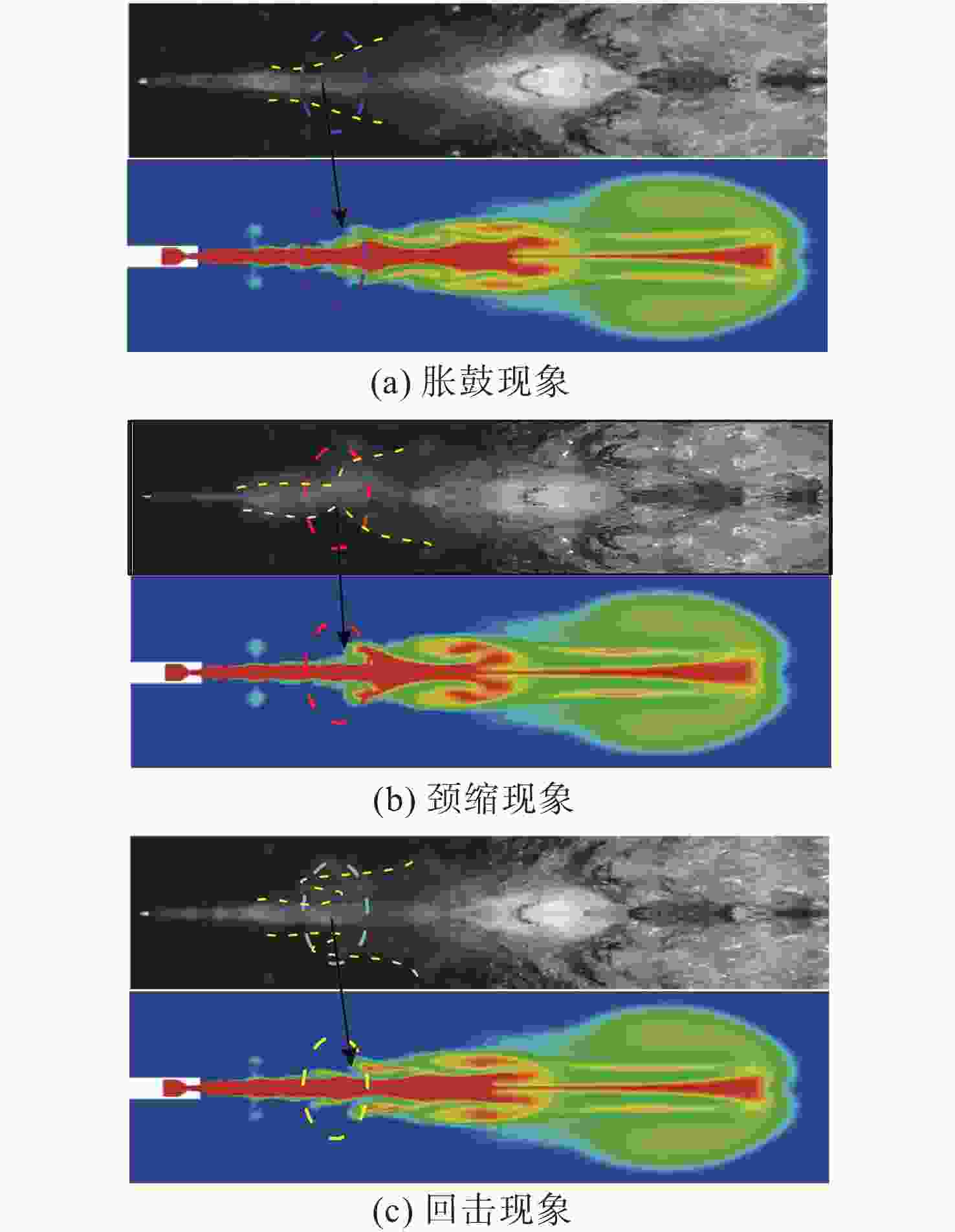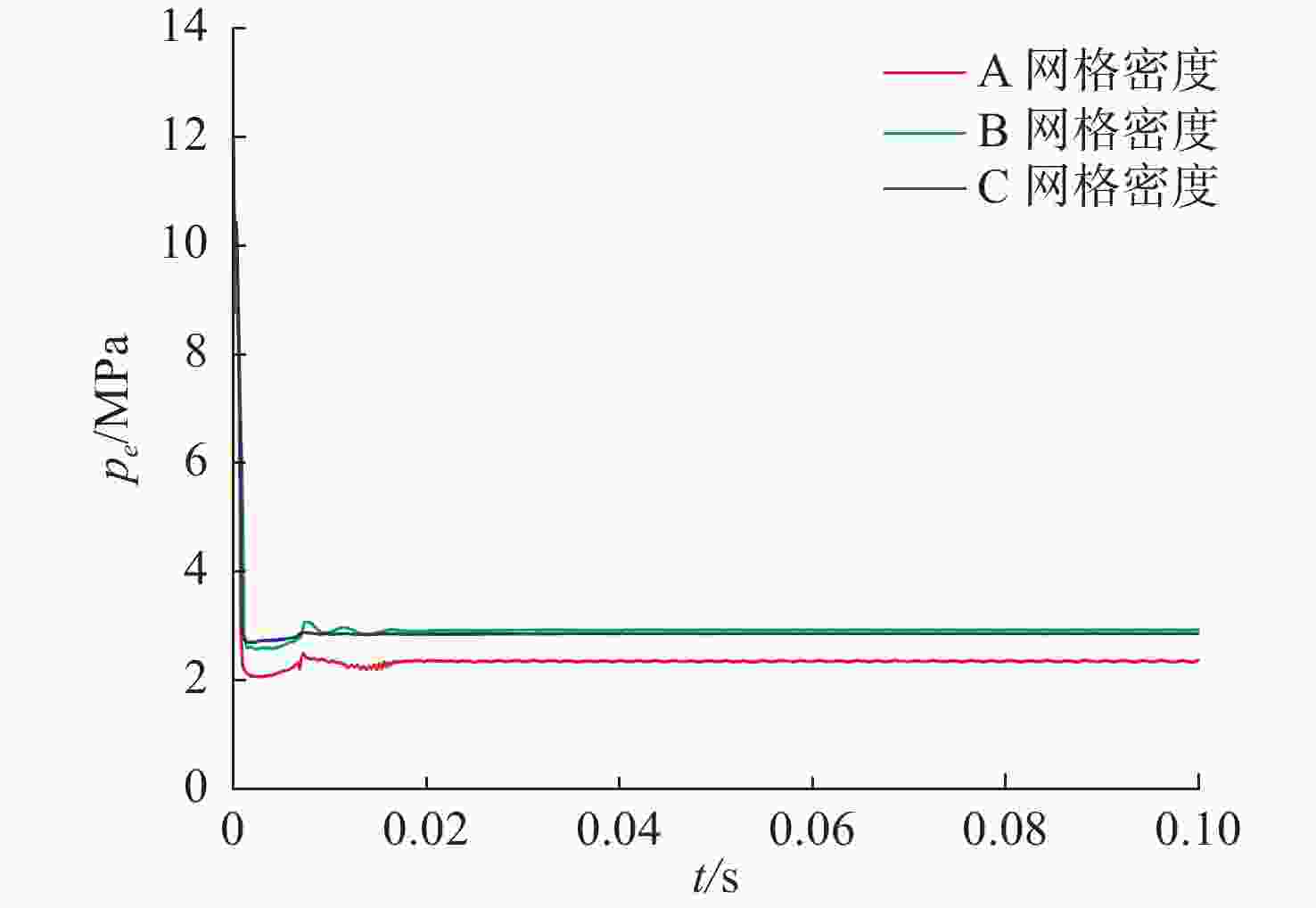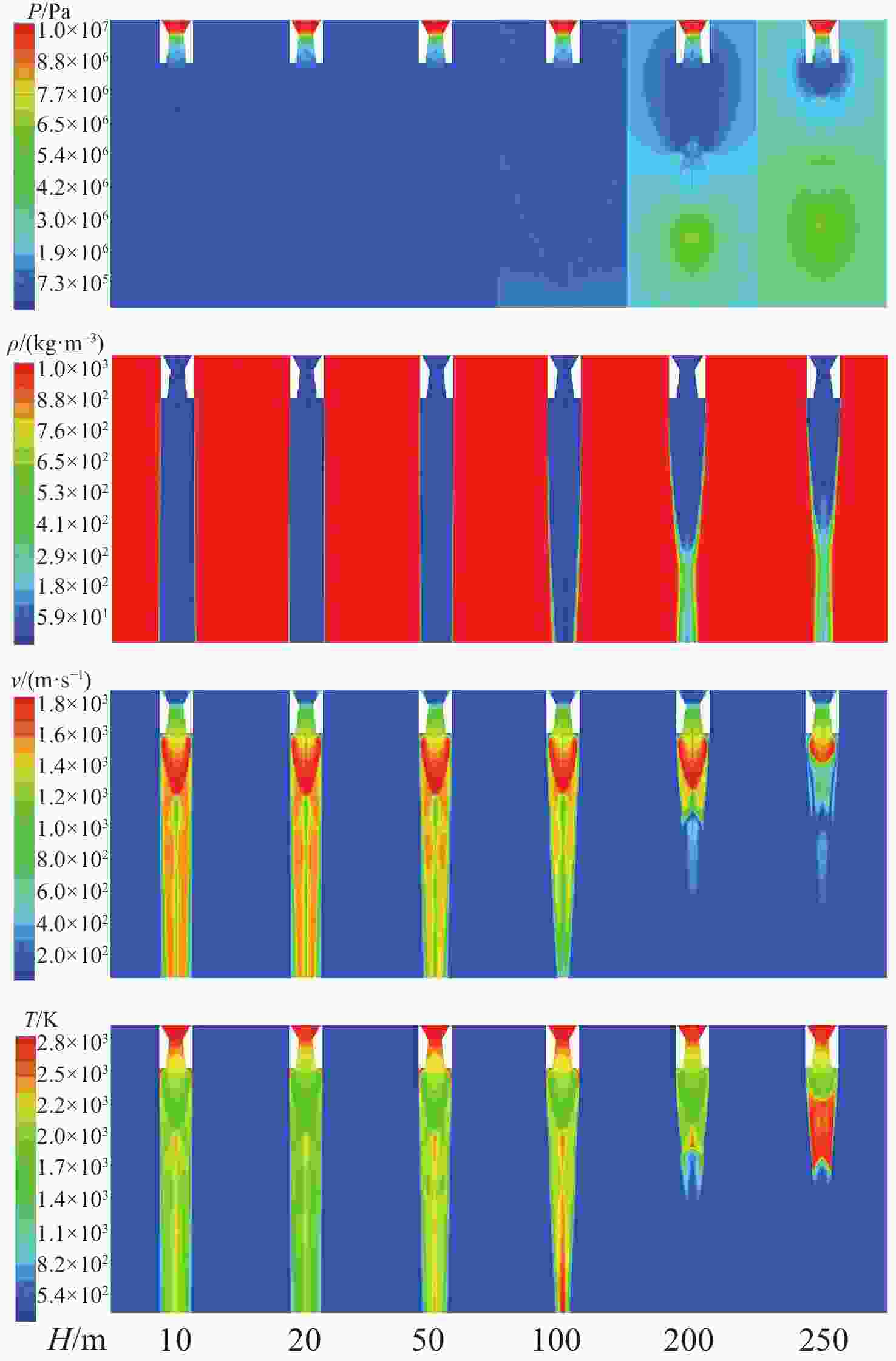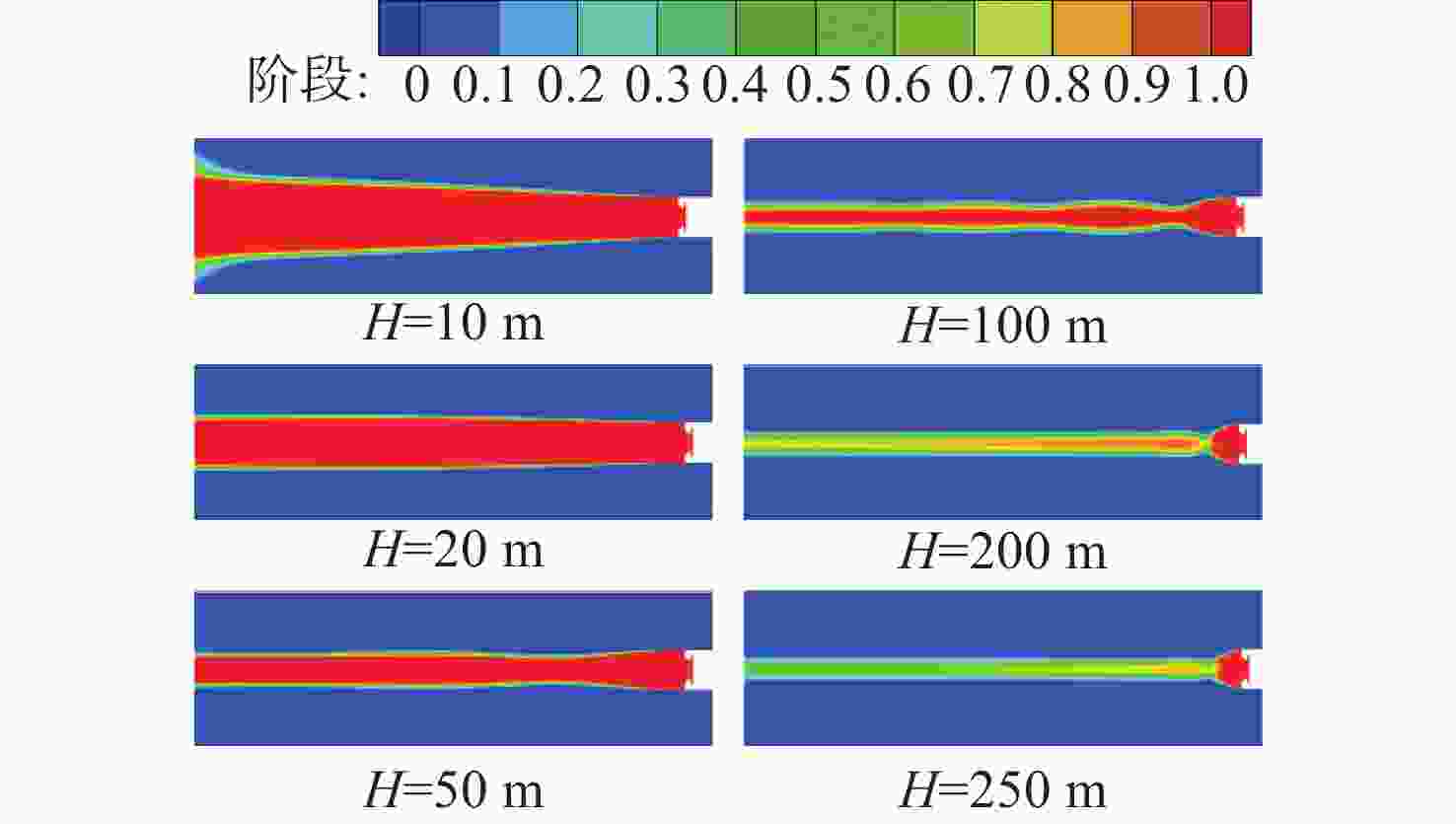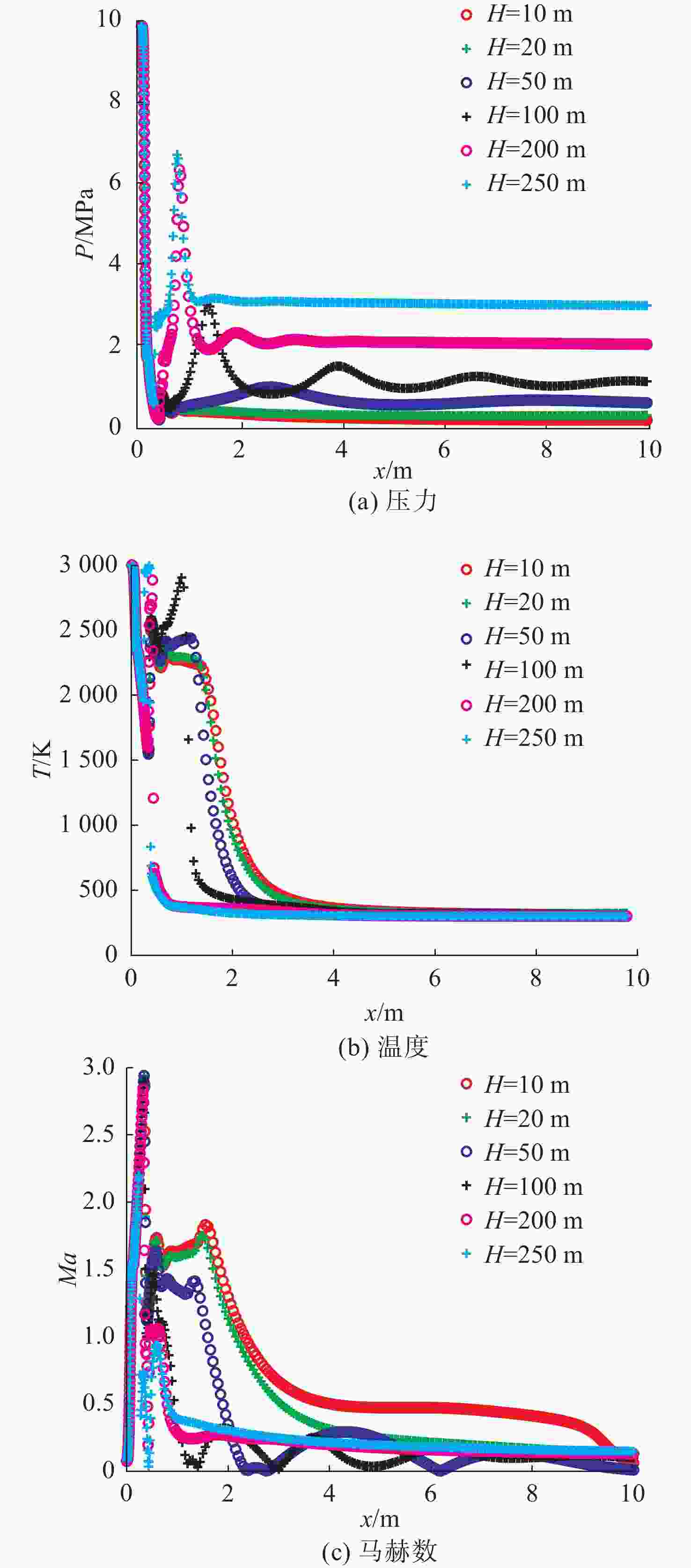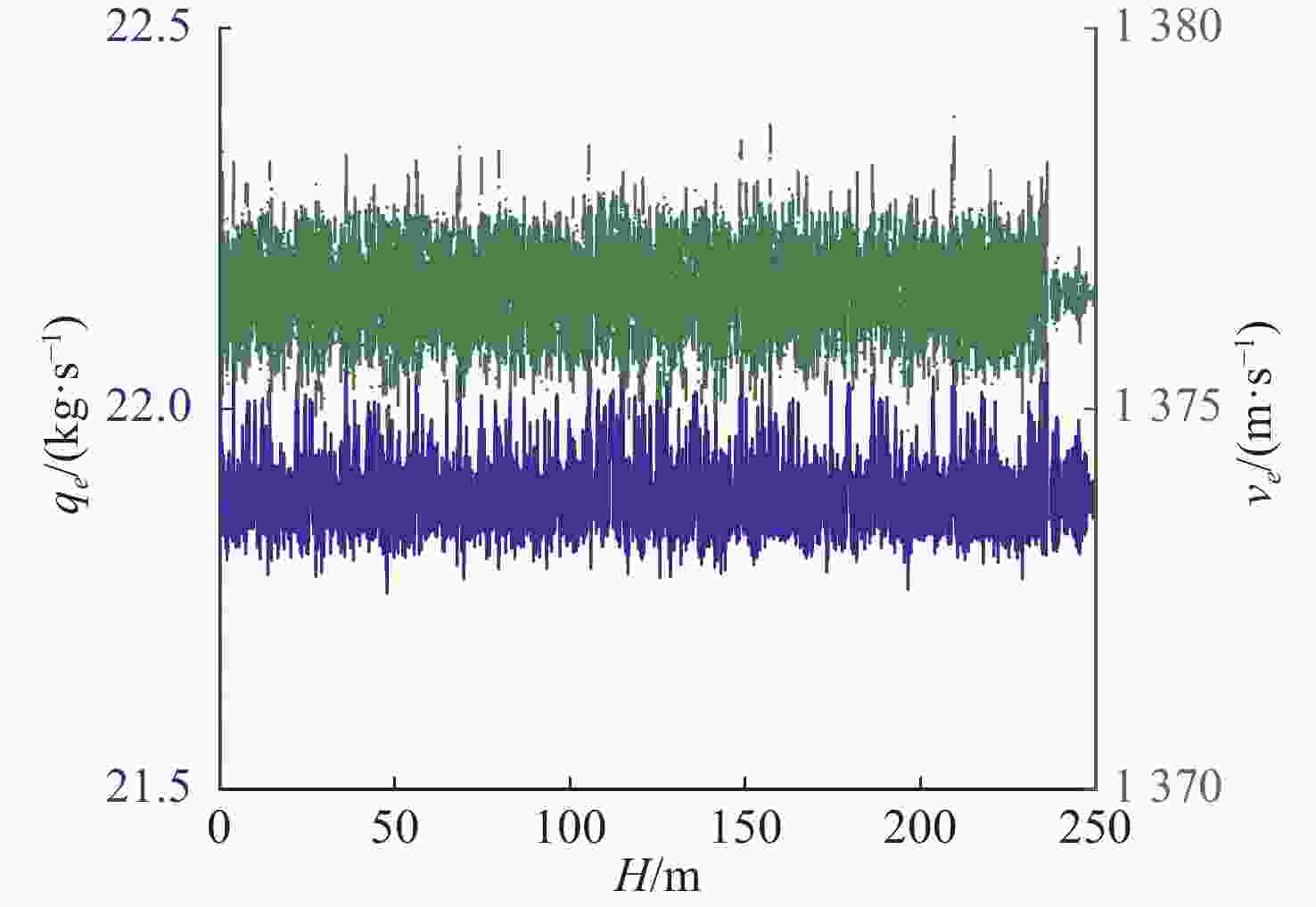Numerical Simulation of Underwater Gas Jet Fields with the Continuous Change of Ambient Pressure
-
摘要: 深海反潜导弹在水下航行过程中会经历大幅度的水深变化, 伴随着环境压强的连续变化, 反潜导弹水下固体火箭发动机的水下燃气射流结构与工作特性具有重要的研究意义。文中采用液体体积多相流模型, 结合用户自定义函数和动网格技术, 建立了水下固体火箭发动机轴对称动态模型, 对水下发动机沿垂向运动至250 m水深过程进行数值仿真。仿真结果表明, 在水下运动过程中喷管尾部燃气射流不再出现断裂与回击等现象, 在超音速射流建立过程中, 激波逐步推出喷口, 最终形成位置固定的锥形激波; 在100 m水深以下, 燃气射流流场特性受环境压强的影响较大, 呈现较强的压缩性; 在大航速200 m/s速度航行时, 射流梗阻效应减弱, 使得水下发动机工作性能受到环境压强的作用较小。文中研究可为水下发动机深水垂向运动工作性能提供参考。Abstract: Deep-sea antisubmarine missiles undergo significant changes in water depth during underwater navigation. It is of great importance to study the structure of the gas jet and working characteristics of the underwater solid propellant rocket engine of antisubmarine missiles during continuous changes in environmental depth pressure. Utilizing the volume of fluid (VOF) multiphase model, this study combines the user-defined function (UDF) with the dynamic mesh technique to establish an axisymmetric dynamic model of an underwater solid propellant rocket engine, as well as simulates the process of vertical motion of the underwater engine to a depth of 250 m. The results show that the gas jet no longer breaks and strikes back at the end of the nozzle during underwater motion. During the formation of the supersonic jet, the shock wave is gradually pushed out of the nozzle outlet, and finally, a conical shock wave with a fixed position is formed. Below a depth of 100 m, the flow field characteristics of the gas jet are significantly affected by the ambient pressure, and the flow field structure shows apparent compressibility. At a speed of 200 m/s, the gas jet obstruction effect is weakened, which reduces the effect of the ambient pressure on the working characteristics of the underwater engine. The study of the flow field characteristics of underwater gas jets subjected to continuous changes in ambient pressure can provide a reference for exploring the working performance of underwater engines in deep-water vertical motion.
-
表 1 不同工况的网格数目
Table 1. Number of meshes in different conditions
序号 代表意义 网格量 A 稀疏网格 20×104 B 标准网格 30×104 C 加密网格 40×104 -
[1] 林宗祥, 孙永侃, 熊正祥. 国外反潜导弹武器系统综述[J]. 飞航导弹, 2011(2): 50-54. [2] 魏征, 杜度, 刘洋, 等. 美国反潜装备技术发展研究[J]. 舰船科学技术, 2019, 41(9): 154-157.Wei Zheng, Du Du, Liu Yang, et al. Research on the Development of Anti-submarine Equipment and Technology[J]. Ship Science and Technology, 2019, 41(9): 154-157. [3] Ketter T N. Anti-Submarine Warfare Concept of Operations for the 21st Century[R]. Newport: Naval War College, 2004. [4] 张有为. 固体火箭发动机水下工作特性的研究[D]. 合肥: 中国科学技术大学, 2007. [5] Hassan Z M. Nozzle Analyze of Under Water Missiles[C]//37th AIAA Conference & Exhibit. Lake City, UT, U.S.A: American Institute of Aeronautics and Astronautics, 2001, 3277: 1-9. [6] Dai Z Q, Wang B Y, Shi H H, et al. Experimental Study on Hydrodynamic Behaviors of High-speed Gas Jet in Still Water[J]. Acta Mechanica Sinica, 2006, 22: 443-448. doi: 10.1007/s10409-006-0029-2 [7] 许海雨, 罗凯, 刘日晨, 等. 水下超声速气流流场非定常特性研究[J]. 推进技术, 2019, 40(11): 2618-2625.Xu Hai-yu, Luo Kai, Liu Ri-chen, et al. Research on Unsteady Characteristics of Underwater Supersonic Gas Jet[J]. Journal of Propulsion Technology, 2019, 40(11): 2618-2625. [8] 王宝寿, 许晟, 易淑群, 等. 水下推力矢量特性试验研究[J]. 船舶力学, 2000, 4(5): 9-15.Wang Bao-shou, Xu Sheng, Yi Shu-qun, et al. Test Studies of Underwater Thrust Vector Control Performance[J]. Journal of Ship Mechanics, 2000, 4(5): 9-15. [9] 王利利, 刘影, 李达钦, 等. 固体火箭发动机水下超声速射流数值研究[J]. 兵工学报, 2019, 40(6): 1161-1170. doi: 10.3969/j.issn.1000-1093.2019.06.006Wang Li-li, Liu Ying, Li Da-qin, et al. Numerical Study of Underwater Supersonic Gas Jets for Solid Rocket Engine[J]. Acta Armamentarii, 2019, 40(6): 1161-1170. doi: 10.3969/j.issn.1000-1093.2019.06.006 [10] 祁晓斌, 袁绪龙, 徐保成, 等. 导弹水下发射近筒口点火时机选择影响研究[J]. 推进技术, 2019, 40(7): 1449-1457.Qi Xiao-bin, Yuan Xu-long, Xu Bao-cheng, et al. Research on Ignition Timing Choice for Near-tube Underwater Vertical Launching Missile[J]. Journal of Propulsion Technology, 2019, 40(7): 1449-1457. [11] 张磊. 大水深火箭发动机尾流场数值模拟[J]. 固体火箭技术, 2019, 42(2): 159-163.Zhang Lei. Numerical Simulation of Tail Flow Field for Underwater Solid Rocket Motor[J]. Journal of Solid Rocket Technology, 2019, 42(2): 159-163. [12] 陈启林. 水下燃气射流数值仿真与试验研究[D]. 北京: 北京理工大学, 2016. [13] 张春, 郁伟, 王宝寿, 等. 水下超声速燃气射流的初期流场特性研究[J]. 兵工学报, 2018, 39(5): 961-968. doi: 10.3969/j.issn.1000-1093.2018.05.016Zhang Chun, Yu Wei, Wang Bao-shou, et al. Research on the Initial Flow Field Characteristics of Underwater Supersonic Gas Jets[J]. Acta Armamentaria, 2018, 39(5): 961-968. doi: 10.3969/j.issn.1000-1093.2018.05.016 [14] 唐云龙. 深水条件下固体火箭发动机燃气射流与推力特性研究[D]. 北京: 北京理工大学, 2016. [15] 侯子伟, 黄孝龙, 李宁, 等. 水下高速燃气射流及复杂波系二维数值仿真[J]. 水下无人系统学报, 2020, 28(1): 67-74.Hou Zi-wei, Huang Xiao-long, Li Ning, et al. Two-Dimensional Numerical Simulation of Underwater High-Speed Gas Jet and Complex Wave System[J]. Journal of Unmanned Undersea System, 2020, 28(1): 67-74. [16] 唐嘉宁, 李世鹏, 王宁飞. 水下固体火箭发动机的负推力现象研究[J]. 固体火箭技术, 2012, 35(3): 325-344. doi: 10.3969/j.issn.1006-2793.2012.03.008Tang Jia-ning, Li Shi-peng, Wang Ning-fei, et al. Study on the Negative Thrust of the Underwater Solid Rocket Engines[J]. Journal of Solid Rocket Technology, 2012, 35(3): 325-344. doi: 10.3969/j.issn.1006-2793.2012.03.008 -




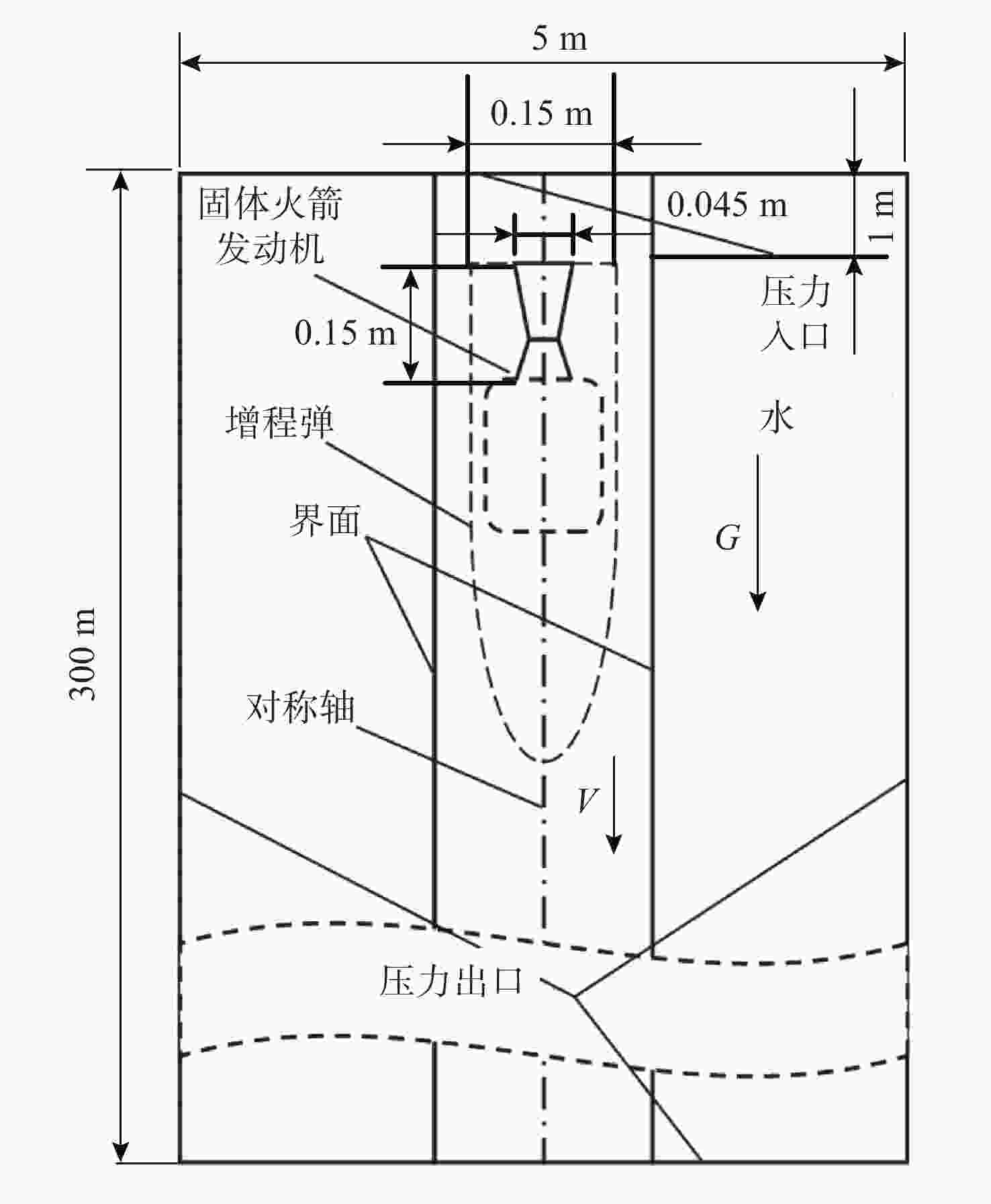
 下载:
下载:
